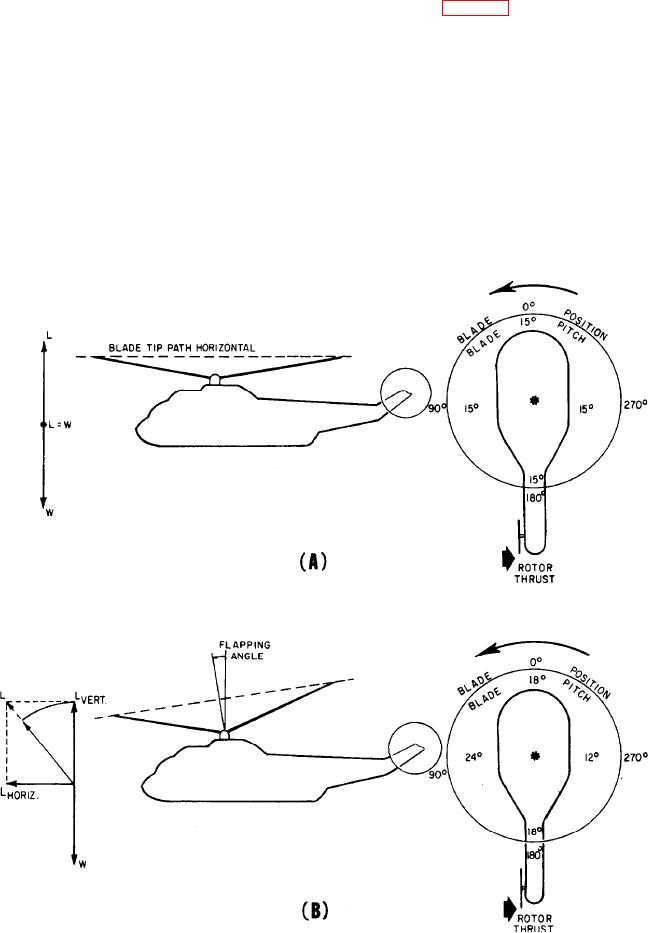
in its rotation (fig. 8-12). To accomplish forward
pitch, the faster the rotor blades turn, the more
flight, the blade pitch is greatest as it passes the
horizontal the blades become because of centri-
90-degree position. The blade pitch will be least
fugal force. As the blade pitch increases, lift also
at the 270-degree position, and equal at the
increases, and the coning angle increases because
0-degree and 180-degree positions. To turn the
of the load on the blades.
aircraft, lateral motion of the cyclic stick causes
In hovering flight, cyclic controls pitch and
blade pitch to be greatest at 0 and 180 degrees,
roll, which create forward and sideward motion,
and least at 90 and 270 degrees. Since the blades
respectively. The collective controls altitude and
form a spinning mass, the gyroscopic principle of
the rudder pedals control heading.
precession occurs 90 degrees in the direction of
The cyclic stick provides pitch and directional
rotation from where the lifting force is applied.
control of the helicopter. When the pilot applies
The coning angle remains the same. However, the
pressure to the cyclic stick, each blade moves to
cone tilts (called flapping angle) in the direction
a specific pitch angle as it passes a certain point
Figure 8-12.-Flapping angle creates horizontal lift. (A) Hovering flight; (B) Forward flight.
8-9

